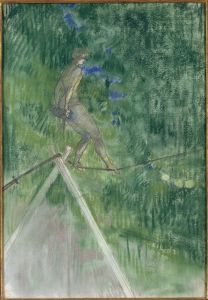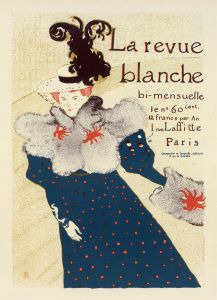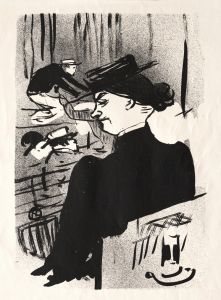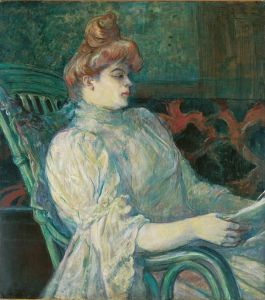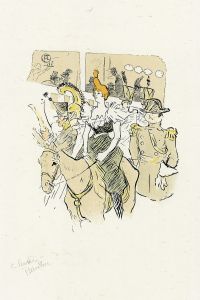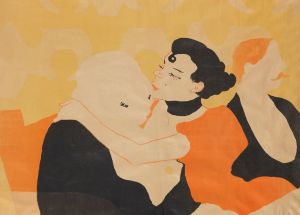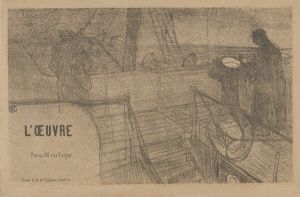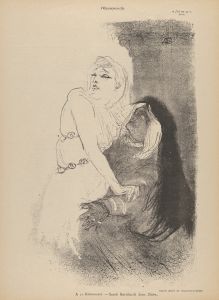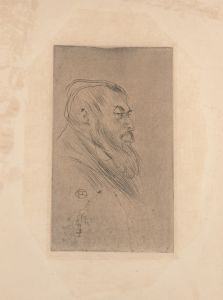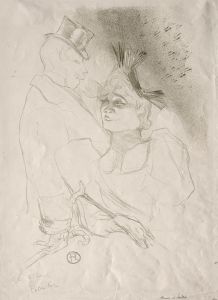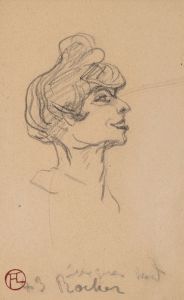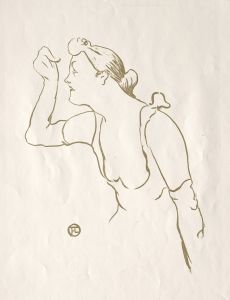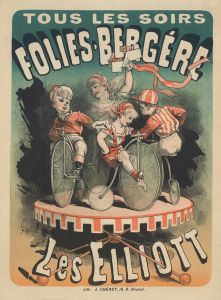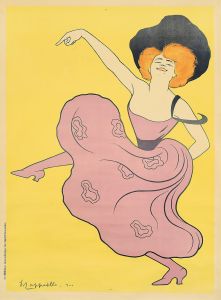
Yvette Guilbert: Chanson Ancienne
A hand-painted replica of Henri de Toulouse-Lautrec’s masterpiece Yvette Guilbert: Chanson Ancienne, meticulously crafted by professional artists to capture the true essence of the original. Each piece is created with museum-quality canvas and rare mineral pigments, carefully painted by experienced artists with delicate brushstrokes and rich, layered colors to perfectly recreate the texture of the original artwork. Unlike machine-printed reproductions, this hand-painted version brings the painting to life, infused with the artist’s emotions and skill in every stroke. Whether for personal collection or home decoration, it instantly elevates the artistic atmosphere of any space.
Henri de Toulouse-Lautrec, a prominent French painter, printmaker, draughtsman, and illustrator, created the artwork "Yvette Guilbert: Chanson Ancienne" in the late 19th century. Toulouse-Lautrec is renowned for his depictions of Parisian nightlife, particularly the bohemian lifestyle of Montmartre, and his association with the Post-Impressionist movement. His works often capture the vibrancy and decadence of the era, and he is celebrated for his innovative use of color and line.
Yvette Guilbert, the subject of this artwork, was a famous French cabaret singer and actress known for her distinctive style and expressive performances. Born in 1865, Guilbert gained widespread acclaim in the 1890s for her unique delivery of risqué songs and her ability to convey deep emotion through her performances. She became a muse for many artists of the time, including Toulouse-Lautrec, who was captivated by her talent and charisma.
"Yvette Guilbert: Chanson Ancienne" is one of several works by Toulouse-Lautrec that feature the singer. The artwork is a lithograph, a medium that Toulouse-Lautrec frequently employed to create posters and prints. Lithography allowed him to produce multiple copies of his works, making art more accessible to a broader audience and contributing to the popularization of his subjects.
In this particular lithograph, Toulouse-Lautrec captures Guilbert in a moment of performance. The composition is characterized by its bold lines and limited color palette, which draw attention to Guilbert's expressive face and hands. Her elongated figure and the exaggerated features are typical of Toulouse-Lautrec's style, which often emphasized the personality and presence of his subjects over realistic representation.
The title "Chanson Ancienne" suggests that the artwork depicts Guilbert performing an old or traditional song, which aligns with her repertoire that often included historical and folk songs. Toulouse-Lautrec's portrayal of Guilbert in this piece highlights her dramatic flair and the emotional depth of her performances, qualities that endeared her to audiences and made her a beloved figure in the Parisian entertainment scene.
Toulouse-Lautrec's relationship with Guilbert was both professional and personal. He admired her artistry and frequently attended her performances, capturing her likeness in numerous sketches, paintings, and prints. These works not only document Guilbert's career but also provide insight into the cultural milieu of late 19th-century Paris.
"Yvette Guilbert: Chanson Ancienne" is a testament to Toulouse-Lautrec's skill as an artist and his ability to convey the essence of his subjects. The lithograph remains an important piece in the study of both Toulouse-Lautrec's oeuvre and the history of French cabaret. It exemplifies the artist's innovative approach to portraiture and his contribution to the visual culture of his time.
Today, Toulouse-Lautrec's works, including his depictions of Yvette Guilbert, are celebrated for their historical significance and artistic merit. They offer a window into the vibrant world of Montmartre and the performers who defined the era, preserving the legacy of both the artist and his muse for future generations.





